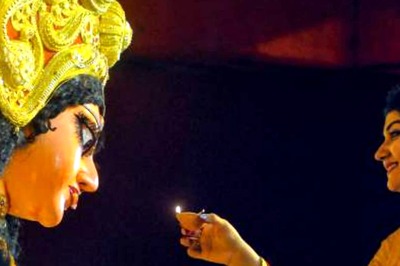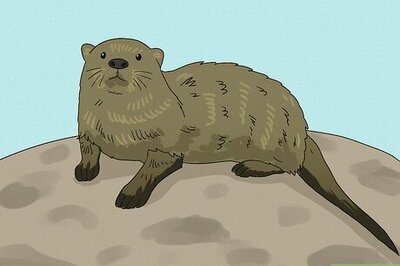
views
A few years ago the name Devanhalli would not have meant squat to the people of Bangalore.The kickoff of the Bengaluru International Airport made Devanhalli a part of our daily conversation.Until then it was just a village on the outskirts of Bangalore many hadn’t heard of.What we don’t know is that Devanhalli has a special place in Bangalore’s history.Located at a distance of 35 km towards North of Bangalore, Devanhalli belonged to the Gangawadis and later came under the rule of Rashtrakutas, Nolambas, Pallavas, Cholas, Hoysalas and finally the Vijayanagara rulers.In the backyard of this village is a structure of historical importance — the regal Devanhalli fort which is also famous for being the birthplace of Tipu Sultan, the tiger of Mysore.In 1501 AD, during the reign of Vijayanagara Empire, one Malla Baire Gowda a vassal who was a descendant of the Morasu Okkalu clan who had fled from Kanchi and settled in Avati, a village near Devanhalli was guided in a dream by a deity to build a fort in the area.The consent of the head man named Deva was obtained only after bestowing him with liberal compensation and the promise that the new town should bear his name.Thus, a mud fort was erected and named Devanhalli or Devandhalli.The descendants of Malla Baire Gowda ruled Devanhalli for 249 years after which Devanhalli was annexed to Mysore in 1749 under Nanja Raj after a battle of eight months.In 1758 the fort and district of Bangalore were conferred to Haider Ali, a horseman, as a jahagir in recognition of his distinguished services.In 1791, along with Bangalore, Devanhalli was captured from Tipu by the British under Lord Cornwallis.Rebuilt for defence in the 17th century during Haider Ali and Tipu’s rule, the fort is of Islamic architecture.It is oval in shape and an aerial view of the fort resembles a tortoise.The top layer of the fort has terracotta tiles.Below the tiles is a layer of lime mixed with coarsely powdered bricks, a mechanism for water proofing.The rest of the structure is stone.Flanked with 13 circular bastions or projections all around, the fort’s thick rubble and stone masonry walls were made to withstand cannon fire.Stone steps jutting out of inner walls were used to climb the fort.Small channels around the inner fort walls allowed water to drain out.Steps run along the parapet where soldiers used to fire guns from small holes called loopholes in the parapet.Each gun point has four loopholes pointing in four directions.Such gun points are placed at regular intervals.In the bastions, soldiers would keep watch on the grounds while others worked the cannons.A moat surrounded the fort with a drawbridge across it to keep the enemy out.One can still see the pulleys that operated the drawbridge in the wall above the fort’s gateway.Touching the cool rust-free iron hinges which once held the gates to the fort still sitting sturdily at the entrance, is a surreal experience and is sure to drive your imagination to the life that existed here.Outside the fort run fields of vegetable gardens.A road passes by the mouth of the entrance and vehicles keeping moving in and out of the fort.There are several temples in the fort, the most famous being Sri Venugopalaswamy or Lord Krishna’s temple.Gopalakrishna Bhatta the fifth generation temple priest narrated the story of how Malla Baire Gowda built the temple with money and idols found in an ant hill nearby.The temple built in Chola style has inscriptions from Ramayana and Krishna leela carved on its walls.The guards of the temple are two black sculptures of Jaya and Vijaya in a defensive stance.Muniyappa a school teacher and lawyer whose family has lived here since two decades says that every year in Magha masa a procession of Lord Venugopaswamy’s chariot takes place which the whole town attends.He says that it is common belief that the 3,500 odd people residing inside the fort are descendants of the labourers who built it.At 150m South-West of the fort is Tipu’s birth place, the only remains of which is a four-pillared arched structure resting on a square platform.The fort that we see today is a pale version of its glorious past, a past that plays a vital role in Bangalore’s existence.Kempe Gowda, the founder of Bangalore belonged to the Morasu Okkalu clan.The once protecting monument is now a ‘protected monument’ as per the ASI, and is fighting for survival which goes to show how little we are giving back to the city that has made us.




















Comments
0 comment